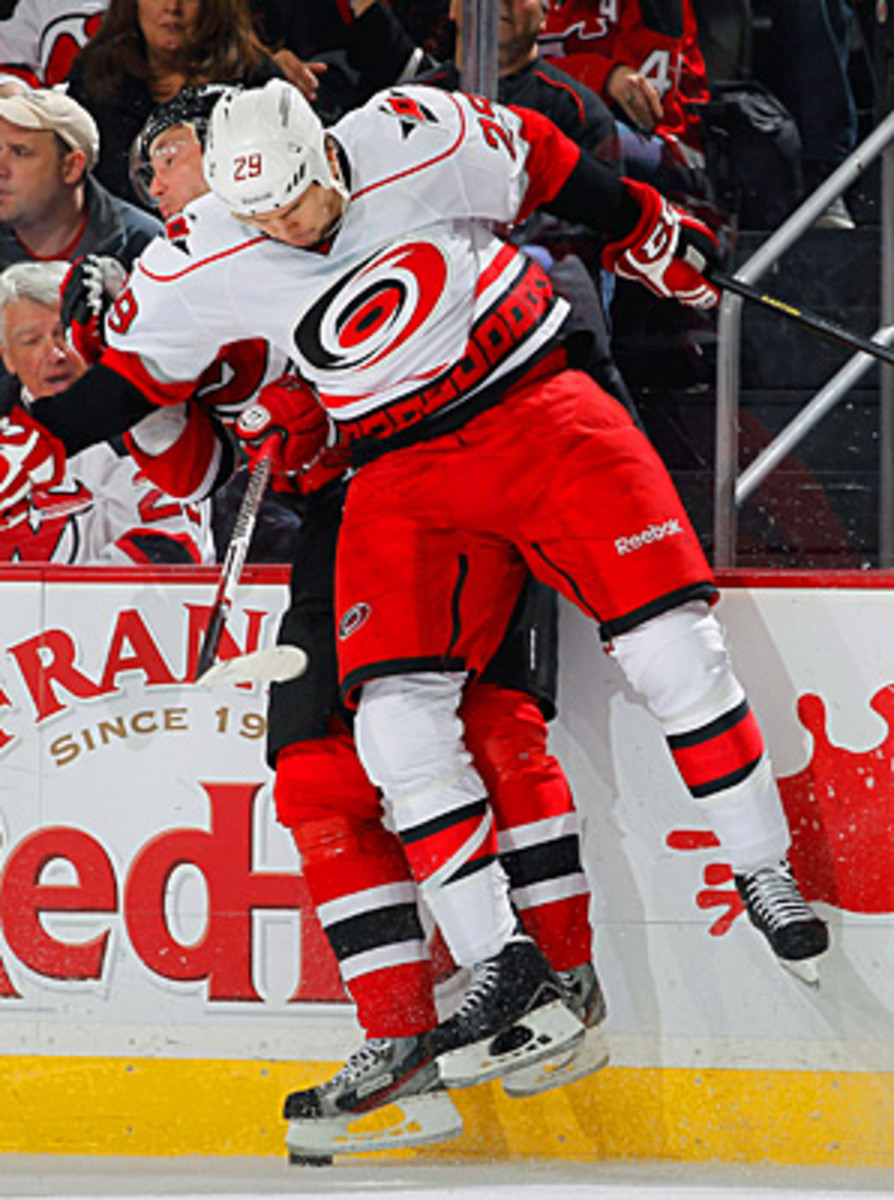
NHL should mirror NFL in discussion of player safety
Is the time now for the NHL to take further action for player safety? (Getty Images)
There's been talk in and around the league for years about the possibility of widening the size of the current playing surface.
The game's getting faster, the thinking goes. The players are getting bigger. It's too easy to diminish the impact of skill players ... and there's a greater chance than ever of getting seriously hurt.
It's a radical idea that will demand serious debate.
Especially if another sport beats the NHL to the punch.
According to this story in the National Football Post by Chicago Tribune writer Dan Pompei, the National Football League has considered widening its playing field in the past year and could re-examine the issue again at meetings ahead of the annual draft combine.
The reasons for the big dog of American sports to consider such a dramatic change sound pretty familiar.
“Some believe NFL players have outgrown their field, which is part of the problem with head injuries,” Pompei writes. “The thinking is a wider field would spread out bodies over more space, reducing hits in the middle of the field. The down the field game wouldn’t change much, but box play could be considerably different.
“[Canadian Football League-width] fields also may encourage faster, more athletic, and smaller players because covering ground would become a more valued asset.”
The stodgy ol' NFL isn't big on fresh, forward thinking — this is a league, after all, that fines players for excessive celebrations and integrity-threatening violations like modifying one's undershirt. But it isn't exactly warm to losing valuable talent too soon to career-ending injury ... or the potential for lawsuits suggesting complicity in concussion-related brain damage, either.
Making a decision of this magnitude wouldn't be any easier on turf than on ice. The objections would be virtually identical. It would be impossible within current stadium configurations, some will say. It threatens the integrity of the game, others might suggest. It gives too much of an edge to offenses ... and no one wants to watch a game of touch football.
And there's the rub. The guardians of both sports recognize that bone-jarring collisions are as big a draw as any breathtaking display of skill, so balancing the commercial appeal of ultraviolence with the prudence of increasing safety merits a thorough examination of all options ... no matter how provocative they might be.
































